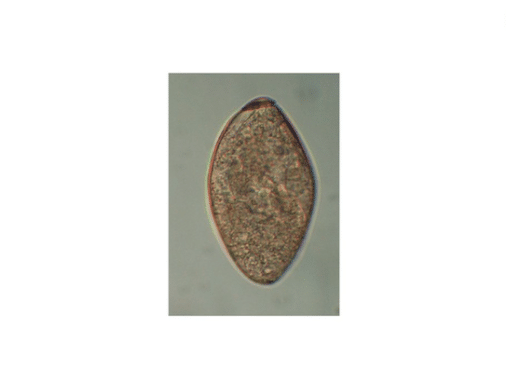TREMATODES (FLUKE)
Trematoda is a class of flatworms known as flukes or trematodes. They are obligate internal parasites with a complex life cycle requiring at least two hosts. The intermediate host, in which asexual reproduction occurs, is usually a snail. The definitive host, where the flukes sexually reproduce, is a vertebrate. Infection by trematodes can cause disease in all five traditional vertebrate classes: mammals, birds, amphibians, reptiles, and fish.
LIFE CYCLE
Trematodes have a very complex life cycle and depending on what taxa they belong to, their life cycles can be completed with as little as one host compared to the typical three hosts. When there is one host, this is normally a specific species of snail of the family Lymnaeidae. Almost all trematodes infect molluscs as the first host in the life cycle, and most have a complex life cycle involving other hosts. Most trematodes are monoecious and alternately reproduce sexually and asexually. The two main exceptions to this are the Aspidogastrea, which have no asexual reproduction, and the schistosomes, which are dioecious.

In the definitive host, in which sexual reproduction occurs, eggs are commonly shed along with host feces. Eggs shed in water release free-swimming larval forms (Miracidia) that are infective to the intermediate host, in which asexual reproduction occurs.
A species that exemplifies the remarkable life history of the trematodes is the bird fluke, Leucochloridium paradoxum. The definitive hosts, in which the parasite reproduces, are various woodland birds, while the hosts in which the parasite multiplies (intermediate host) are various species of snail. The adult parasite in the bird’s gut produces eggs and these eventually end up on the ground in the bird’s feces. Some eggs may be swallowed by a snail and hatch into larvae (miracidia). These larvae grow and take on a sac-like appearance. This stage is known as the sporocyst and it forms a central body in the snail’s digestive gland that extends into a brood sac in the snail’s head, muscular foot and eye-stalks. It is in the central body of the sporocyst where the parasite replicates itself, producing many tiny embryos (redia). These embryos move to the brood sac and mature into cercaria.
LIFE CYCLE OF LIVER FLUKE
Liver flukes, one of the different species, are responsible for causing liver fluke disease which is also known as fasciolosis. They are hermaphroditic internal parasites. They are caused by the migration of a large number of immature flukes through the liver passageway or by adult flukes that migrate to the bile ducts. Liver flukes infect all grazing animals and are passed from human to human when they eat raw or undercooked fish. Like other flukes, the liver flukes need intermediate hosts and as a result, the transmission from animals to humans happens in three phases. The first phase is the infection of the snail (the first intermediate host) via feces. They complete their gestation and hatch as cercariae. They leave their snail hosts and infect fish who are their second intermediate host. Lastly, humans ingest the metacercariae in raw and undercooked fish. In humans, the metacercariae complete their life cycle and become full grown liver flukes.
INFECTIONS
Trematodes can cause disease in many types of vertebrates, including mammals, birds, reptiles, and fish. Cattle and sheep can become infected by eating contaminated food. These infections lead to a reduction in milk or meat production, which can be of significant economic importance to the livestock industry.[14]
Human trematode infections are most common in Asia, Africa and Latin America. However, trematodes can be found anywhere where untreated human waste is used as fertilizer. Humans can be infected by trematodes by immersion in or ingestion of contaminated water, or by consuming raw or undercooked contaminated animals or plants.[16]
Albendazole can be used to treat clonorchiasis and opisthorchiasis. Triclabendazole is often used to treat fasciolosis,[17] and may also be useful in the treatment of paragonimiasis[18] and dicrocoeliasis.[19] Praziquantel is effective in the treatment of all diseases caused by flukes (clonorchiasis, dicrocoeliasis, echinostomiasis, fasciolopsiasis, fasciolosis, gastrodiscoidiasis, heterophyiasis, metagonimiasis, opisthorchiasis, paragonimiasis, and schistosomiasis).[20]


